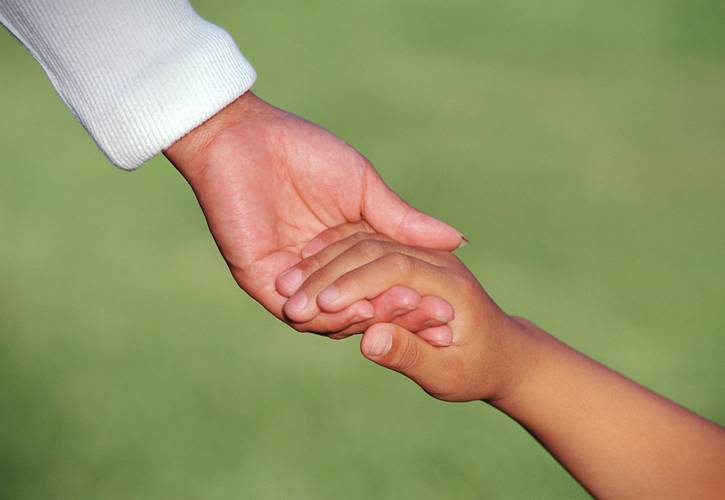WASHINGTON, D.C. — The well-being of children is intricately connected to the well-being of their mothers, starting from the multiplying cells of a baby’s brain inside the womb, researchers say. But when it comes to physical violence, children’s experiences have been increasingly treated as separate from their mothers’ – and public health professionals say that needs to change.
Programs for children living with violence often fail to examine the possibility that women in those households may also be experiencing violence, said Dr. Mirta Roses Periago, director of the Pan American Health Organization, a public health agency that is part of the United Nations system and a regional office for the World Health Organization. As a result, troubling situations at home for the child or the mother may go unrecognized and unaddressed.
 Periago spoke at a briefing in Washington, D.C., on Monday along with representatives from other public health and development organizations to address the intersection of violence against women and children. “Emerging evidence substantiates a complex relationship between violence against women and violence against children,” Periago said. “However, with very few exceptions, the programs, research and policies have grown in parallel paths.”
Periago spoke at a briefing in Washington, D.C., on Monday along with representatives from other public health and development organizations to address the intersection of violence against women and children. “Emerging evidence substantiates a complex relationship between violence against women and violence against children,” Periago said. “However, with very few exceptions, the programs, research and policies have grown in parallel paths.”
Public officials should view violence against women and children as part of a single whole, and develop strategies for responding in an integrated way, Periago said. Strategies should address ways to identify abuse early, develop compassionate care for survivors of violence and prevent the violence in the first place. Prevention strategies can include parenting programs, home visitation initiatives, and ways to help women become financially independent, she said.
In some countries, violence during a woman’s pregnancy is as high as 32 percent, Periago said. When an intimate partner abuses a pregnant woman, her health and her unborn baby’s health can suffer negative consequences, she said.
The developing baby’s brain is particularly vulnerable to disruptions caused by trauma to the mother. “In the last trimester of pregnancy, our brains are being constructed at an incredibly rapid pace,” explained Dr. Neil Boothby, special advisor and senior coordinator for children in adversity at the U.S. Agency for International Development. “We can actually see this now through MRI.”
As the baby gets older, enters adolescence and then reaches adulthood, his or her exposure to abuse as a child serves as a factor in his or her own violent behavior, Periago said.
Jacquelyn Campbell, a professor at the Johns Hopkins University School of Nursing, agreed. “Seeing your father beat your mother and or being abused yourself — that’s a strong risk factor for girls being violent toward their own children, and boys being perpetrators of that violence to their partners,” Campbell said.
Research also shows that the far-reaching effects of childhood exposure to violence can increase a person’s chances of depression, alcoholism and chronic disease like heart trouble, Periago said.
“What’s fascinating about that is that witnessing violence has almost the same impact as being abused yourself,” said Lori Heise, a lecturer at the London School of Hygiene and Tropical Medicine.
At least 133 million children around the world witness abuse between adults in their homes, trauma that can accumulate and create “a cascade of events” if it is combined with other adverse experiences in the children’s lives, like their own sexual or physical abuse, Heise said.
Children who experience four or more types of adverse experiences are five times more likely to become perpetrators of violence against their own partners once they’re grown, Heise said. “Poor parenting and gender socialization helps reproduce negative child outcomes across generations,” she said.
The solutions lie in teaching families how to be better parents, especially as violence against children is often intended to change their behavior for the better, Heise said.
“The aspirations are very good — they want to create a moral child – but they lack the right skills,” Heise said about many families in developing countries who inflict corporal punishment. “They think that violence is the only mechanism to achieve that goal.”
Many times, the abuse of women by their partners is motivated by the same correctional goal, reducing women to the role of children, Heise said.
Teaching parents how to interact in a positive way with their children, how to use time-outs and how to use consistency in enforcing rules can go a long way toward reducing abusive punishment, she said. “Good parenting can buffer the effects of otherwise harmful factors on development of aggression and violence among boys,” Heise said.
Investing in children pays off for societies in the long run, whether one considers the scientific evidence of the effects of violence on the developing fetal brain or the economic view of prize-winning analysts, said Boothby of USAID.
On Dec. 19, the U.S. government will release its international action plan for children in adversity, which will focus on preventing the exploitation of children and the violence against them, Boothby said.
The costs to an economy go up tremendously when the investment is pushed to later in a person’s life, Boothby said. “We have to invest early.”



























